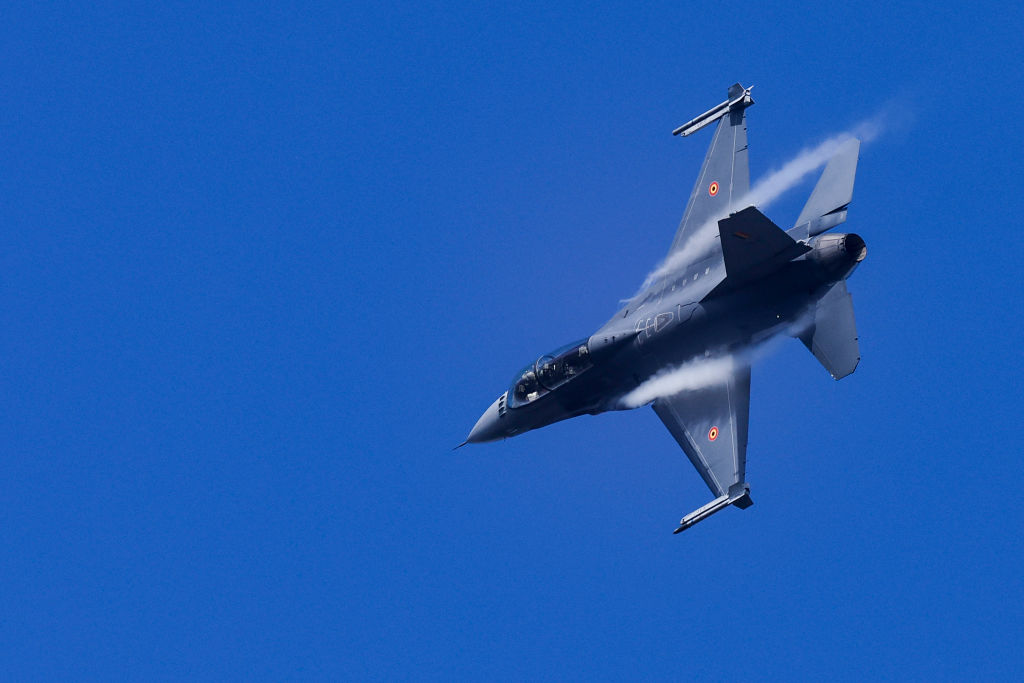Ever since Russia invaded Ukraine almost a year ago, the questions of if, when and how to supply the Ukrainian Air Force (UkrAF) with western fighter aircraft have been a matter of fierce debate. President Zelenskyy has made repeated and impassioned calls for American-made F-16s in particular, as have UkrAF leaders and pilots.
Russia has a dense and highly lethal network of ground-based surface-to-air missile systems
A significant majority of people in Europe and the United States want to see Ukraine emerge victorious and at peace on its own terms as soon as possible. Therefore, it is natural that many are wondering why it is taking so long for western countries to give Ukraine’s pilots the formidable combat aircraft used by the United States and its allies to such devastating effect in every conflict since the end of the Cold War. After all, it is a truism in western militaries that air superiority is a prerequisite for battlefield success. Recent announcements by the Dutch and Polish governments have hinted that they might transfer F-16 Viper multirole fighters to the UkrAF, but senior leaders in the United States, the United Kingdom and Germany have all stated that they will not for the time being. There are several likely reasons for this reticence.
First and foremost is the problem of Russia’s dense and highly lethal network of ground-based surface-to-air missile (SAM) systems. The skies over the frontlines in Ukraine are covered by multiple layers of air defence threats from large, long-range systems like the infamous SA-21 ‘Triumf’ (known in Russia as the S-400) to more numerous and mobile medium-range SAMs like the SA-17 ‘Buk’ and short-range SA-15 ‘Tor’. In addition, Russia has also deployed exotic long-range sensors like the 48Ya6-K1 ‘Podlet’ all-altitude-radar, which can further increase the distances behind the frontlines at which the longer-range Russian SAMs like the S-400 can shoot down Ukrainian jets and helicopters.
The US has supplied significant numbers of the AGM-88 High-Speed Anti-Radiation Missile (HARM) to the UkrAF, and these have been ingeniously integrated onto Ukraine’s existing Soviet-made Mig-29 and Su-27 fighters. Anti-radiation missiles like the HARM (and Russian Kh-31P that has been fired in large numbers against Ukrainian SAMs during the war) detect and home in on radar emissions from enemy SAMs when fired. However, if the SAM crew detects the missile being launched, they can generally avoid being hit by turning their radar to passive mode so it stops emitting energy that the missile can detect. Russian (and most Ukrainian) SAMs are also mobile, and so will reposition if they are fired upon in addition to stopping their radar emissions. The result is that while a lot of anti-radiation missiles have been fired by both sides, comparatively few have actually achieved direct hits on SAM systems. They can force SAM operators to stop transmitting with their radars and relocate temporarily, and so have a suppressive effect when used, but HARM has not come close to removing the threat from Russia’s air defences against Ukrainian jets.
This matters because any western jet that might plausibly be supplied to Ukraine will face the same major threat from Russian SAMs. Even the full might of Nato air power would require a serious campaign at scale to degrade Russia’s integrated air defence systems, and would take losses doing so. Such suppression and destruction of enemy air defences requires hundreds of combat aircraft, with very complex mission planning, weaponry, aerial refuelling tankers, sophisticated surveillance and reconnaissance aircraft, and specialist training and practise to be viable. The relatively small number of western jets that Ukraine is likely to receive and be able to operate sustainably at some point in the next year or so will not come anywhere close to the required level of capability.
Instead, western jets like the American F-16 and F-18 or Swedish Gripen, would have to fly at very low altitudes in Ukrainian service when within tens of kilometres of the frontlines to reduce the effective range at which they could be detected and tracked by Russian ground-based SAM radars. Uneven terrain like hills and river valleys, and even the curvature of the earth, allows pilots to ‘terrain mask’ by putting solid ground between them and enemy ground-based radars at longer ranges. However, in the largely flat terrain of eastern and southern Ukraine there is a limit to how effective terrain masking can be, and in any case flying at very low altitudes would seriously reduce the effectiveness of combat aircraft in many key missions.
In the West, we have relied heavily on multirole combat aircraft like the F-16, Typhoon and Rafale to provide responsive and precise firepower in support of troops in counterinsurgency and intervention campaigns since the 1990s. However, this form of close air support requires fighters to fly above around 15,000 feet, outside the range of anti-aircraft fire and shoulder-fired MANPADS missiles. The fighters then use targeting pods with powerful cameras to find, identify and then designate targets for guided bombs and missiles. This is not possible in the range of enemy SAM systems, since fighters orbiting over the frontlines at medium altitude would be quickly shot down. At very low altitudes, pilots have an extremely short period of time – merely seconds – to actually see potential targets, due to the flat angle at which they approach and the high speed and evasive flying manoeuvres required to reduce the risks from gunfire and MANPADS. Using targeting pods and accurately delivering laser-guided bombs or missiles to hit moving targets on a battlefield is, therefore, extremely challenging. GPS-guided bombs or standoff missiles can be used, but these can generally only hit fixed targets and the precise coordinates must be known before a weapon is released.
Ukrainian pilots would, therefore, be unlikely to be able to provide any significant close air support to Ukrainian troops in the battles that will define the war this year, even if they receive western fighter jets. Instead, western jets are needed to provide a crucial improvement to Ukrainian pilots’ ability to engage Russian jets and cruise missiles in the air-to-air role. Against cruise missiles western fighters could operate, as the Mig-29 and Su-27s already do, at medium level in safer areas of Ukrainian airspace away from the frontlines.
Against Russian fighters and ground attack aircraft, western fighters flown by Ukrainian pilots would probably still need to stay at low altitudes to avoid being engaged by long-range S-400 SAM systems. However, if equipped with missiles like the latest American AIM-120C/D AMRAAM variants or the European Meteor missile, western fighters could much more credibly threaten and thereby push Russian aircraft away from the frontlines. As Ukrainian SAM systems continue to take slow but steady losses and risk running short of Soviet- and Russian-made missiles to use as ammunition, the provision of western fighters will become critical to keeping the Russian air force from regaining an ability to bomb Ukrainian forces effectively.
Whatever western fighters are ultimately supplied, it will be a significant logistical and training task to create the ground-based support infrastructure and personnel to operate complex modern aircraft under fire from Russian missiles. Western contractors will undoubtedly be necessary at first to help guide and train Ukrainian maintainers, and any fighters supplied would be priority targets for Russian missile attacks on their bases, so would have to move regularly. This imposes a significant degree of political risk. Retraining pilots who are already qualified on Ukrainian fighters is less challenging, however, as western jets are actually significantly easier to fly than their Soviet-made equivalents, although they are more complicated to operate as weapons systems.
Escalation is also overplayed as a concern, as due to the Russian SAM threat, western fighters would be almost purely defensive weapons in Ukrainian hands, unless deliberately supplied with long-range stand-off cruise missiles.
Perhaps the biggest challenge is the opportunity costs, however. Western logistics and military personnel capacity is far from infinite, and so the danger with starting to supply western jets now is that the people, resources and supporting infrastructure needed to make it work will be diverted away from support tasks that are more urgent – most notably providing western tanks, armoured vehicles, ammunition and ground-based air defence equipment at scale for the major ground battles to come.
Ultimately, neither the Russian nor Ukrainian armies are designed to rely on air support like Nato forces. Instead, they are primarily artillery and armoured land forces. The Ukrainian Air Force undoubtedly needs western fighters to improve its air defence capabilities and give it more strike options to complement ground based capabilities like HIMARS. However, the question is if the resources needed to make this work are better used elsewhere for now, given that western fighters will not significantly shape the land battles over the coming months.






Comments